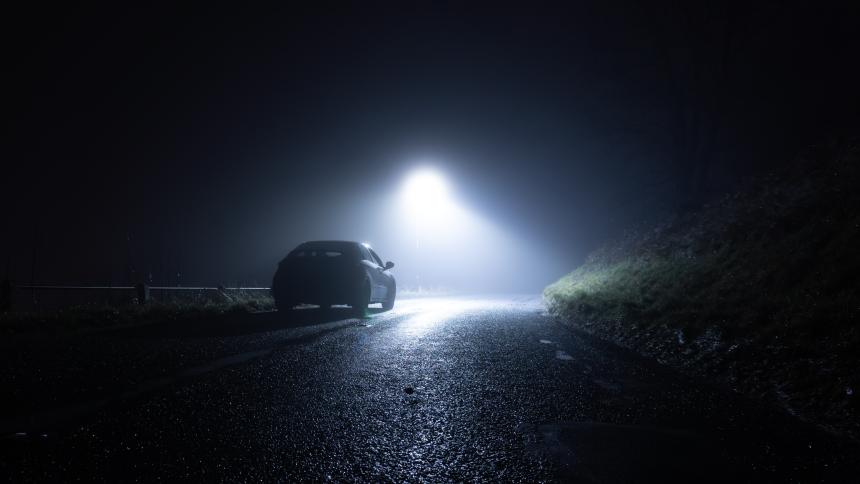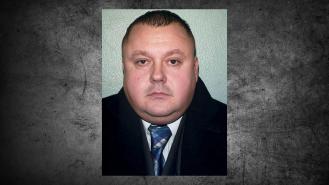
Tracie Andrews invented a road rage killer to cover up murder
On 1st December 1996, a man visiting a friend on Coopers Hill in Alvechurch, Worcestershire, was alerted to the sound of a commotion coming from outside the friend’s home when he went to get into his car. As he approached the sound, he found the body of a deceased man crumpled in the layby of the country road. He was saturated in blood and there was a woman – also covered in blood – standing above him and screaming for assistance. The man was Lee Harvey and the woman was his fiancée, 27-year-old Tracie Andrews.
Harvey had been stabbed more than 30 times and his throat slashed. His carotid artery and jugular vein had both been severed which would have caused a huge loss of blood, rendering him defenceless in a matter of just seconds. Andrews appeared during a press conference to provide a graphic account of her fiancé’s murder. She said that she and Harvey had been drinking in the local pub. They left in Harvey’s white Ford Escort RS 2000 turbo and overtook, what she described as a tatty, dark F registered Ford Sierra, along a country road a few miles away from their home.
According to Andrews, the driver of the car then gave chase down country lanes while flashing his lights and hurling insults. She said as they approached Coopers Hill, a narrow lane around one mile from their home, Harvey pulled over so that he could confront the threatening driver. An argument apparently ensued before the other driver returned to their car. Moments later, however, the passenger of the Ford Sierra got back out of the car, approached Harvey, and started stabbing him.
Andrews said that when she attempted to intervene, the passenger punched her before driving off, leaving her cradling her dying fiancé on the deserted lane. She stated: “Lee was making a funny noise like a gurgling noise. I knelt in something wet… I started to cry.” (The Independent, 2 June, 1997 – ‘Woman Invented Road-Rage Killer’) When she appeared for the press conference, she was bruised and had two black eyes. She described the killer as very overweight with “stary eyes”. (The Sunday Times, 8 December, 1996 – ‘Fiancée Held in Road Murder’)
Police working on the murder case asked the public for any information which could lead to the driver of the Ford Sierra or the passenger. Sergeant Roger Thatcher stated: “We are appealing for witnesses to come forward who may have seen the Ford Escort on the road that night and any other car, whether or not it was connected with the Escort.”
Just the day after the press conference, Andrews was rushed to Alexandra Hospital after overdosing on sleeping tablets and tranquillisers. (The Independent, 9 December, 1996 – ‘Police Guard “Road Rage” Victim’s Fiancée’) She was released from hospital the following day and immediately arrested by police who were working on the murder case. She was questioned at the police station before being admitted to another hospital after becoming “emotionally distressed”. (The Sunday Times, 8 December, 1996 – ‘Fiancée Held in Road Murder’)
Suspicion had apparently fallen onto Andrews almost immediately. Police had been able to track down hundreds of motorists that had been driving along the same roads at around the same time that they were allegedly being chased. However, none of these witnesses could recollect seeing a Ford Escort in a chase with a Ford Sierra. (The Times, 10 December, 1996 – ‘Police Fail to Find “Road Rage” Witnesses’)
Questions were also raised about Andrews’ timeline of events; she had said they left the pub at 9:50pm to drive three miles to their home, but police were not called to the scene until an hour later. Moreover, according to friends and family of Andrews and Harvey, their relationship was “stormy and tempestuous”. In fact, around two months before the murder, Andrews was witnessed punching Harvey twice in the face in a nightclub before biting his neck. (The Independent, 3 July, 1997 – ‘Woman Bit Fiancé’s Neck Like an Apple’)
The couple had been planning on getting married in the summer but according to a friend of Harvey, she was “always throwing him out and then taking him back”. The friend said that their engagement had been called off three times. (The Times, 9 December, 1996 – ‘Fiancée of “Road Rage” Knife Victim is Held by Police’)
On 20th December, Andrews was charged with murder. However, she was freed on bail just before Christmas. While on bail, Andrews continued to staunchly deny any involvement in Harvey’s murder and made a plea to the public for information that could lead them to “the real killer”. She claimed that she heard the driver of the Ford Sierra call the killer “Jez”, before adding that a woman had told her that she was the victim of a road rage attack in the same area a few weeks beforehand. (The Daily Record, 6 February, 1997 – ‘Let us Catch Real Killers’)
At the beginning of July 1997, Andrews stood trial in Birmingham Crown Court for the murder of Harvey. During opening statements, David Crigman QC said it was the prosecution’s argument that Andrews had stabbed Harvey to death following an argument and then invented a “mystery murdering motorist”. He said that Harvey was stabbed with a penknife more than 30 times in the head, neck, chest, and back. “There was never some mystery murdering motorist,” Cringham bellowed. “It was her!”
During the trial, it came out that around three months before the murder, police were called to Harvey’s flat following an argument between the couple. A neighbour testified that on the day of the murder, she had heard the couple argue at Andrews’ home. She said that on occasion, she heard them arguing all day “on and off”. (The Independent, 3 July, 1997 – ‘Couple “Heard Arguing” on Day of Murder’)
This argument continued at the pub and then in the car after leaving. The prosecution theorised that Harvey had pulled the car to the side of the road and he and Andrews got out and continued their screaming match before Andrews unleashed a “vicious” attack on him.
Police had been able to track down two witnesses who testified that no car had been pursuing the couple. Richard Main, who discovered the couple, also testified that Andrews did not mention another car or motorist. It was only when his friend came out to offer more assistance that Andrews started to recite her complex road rage story.
It was also determined that seven minutes had elapsed from the murder to when the neighbour came out. During these minutes, Andrews had not offered medical aid to Harvey and had not called for help. She only sought assistance when she spotted Main leaving his friend’s home to return to his car. The prosecution argued that this time was spent concocting the story about the road-rage incident.
According to the prosecution, after stabbing her fiancé to death, Andrews tucked the knife into her boots and then disposed of it in a waste bin at Princess Alexandra Hospital, where she was treated on the night of the murder. A bloody imprint had been found inside her boot which matched the knife that was used to kill Harvey. However, the actual murder weapon could never be recovered. (The Times, 2 July, 1997 – ‘Woman in Road Rage Case “Hid Murder Knife in Boot”’)
Andrews’ hair had also been found in Harvey’s right hand while another clump of her hair was found nearby, indicating that there had been some kind of struggle. Evidence also showed a blood spatter, which was consistent with somebody dripping blood onto the floor, at the back of Harvey’s car. This evidence completely contradicted Andrews’ claims that Harvey had been attacked at the front of the car.
Tracie Andrews was found guilty of the murder of Lee Harvey and sentenced to life in prison with a recommended minimum of 14 years. Two years later, while serving her prison sentence, Andrews finally confessed to the murder. She said that she “lost control” during an argument about an ex-lover and stabbed Harvey to death. She claimed that Harvey had been the instigator, even alleging that he had threatened her with the knife. (Coventry Telegraph, 19 April, 1999 – ‘Murderer Tracie Tells Paper: Yes, I Did It’)
In 2011, Andrews was released from prison after serving 14 years. She has since changed her name, her appearance and gotten married. According to her new husband, he knows of her past but won’t let that get in the way of their relationship.
Speaking of her release, the parents of Harvey said: “Some might say Tracie has served her time and deserves a second chance but she’s ruined our lives. There is no second chance for Lee or for us. We are serving life sentences until the day we die.” (Birmingham Mail, 29 July, 2011 – ‘We Serve Life Sentence but Tracie is Free’)








